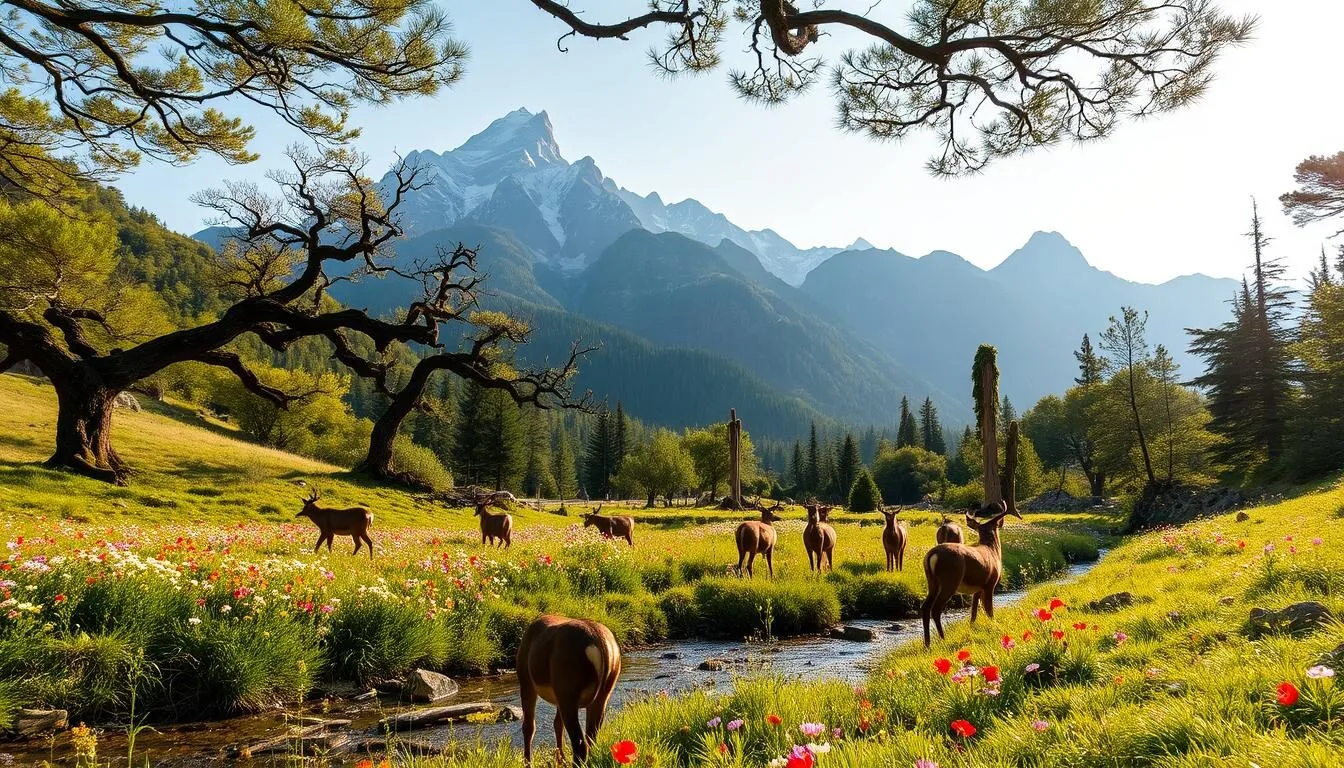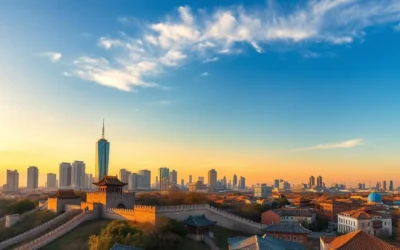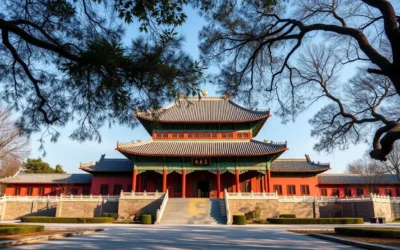✓ Accommodations✓ Flights✓ Rental Cars
Nestled in the heart of China, Shangrao is a treasure trove of natural beauty and cultural heritage, waiting to be explored. With its breathtaking landscapes, historical sites, and traditional tea culture, this region is a must-visit destination for travelers seeking authentic experiences.
As you travel through Shangrao, you’ll be captivated by the stunning scenery of Wuyuan Ancient Villages and Wangxian Valley. The region’s rich cultural heritage and diverse experiences make it an ideal destination for those looking to immerse themselves in beauty and tradition.
Get ready to uncover the secrets of this enchanting region and create unforgettable memories.
Discovering Shangrao: A Hidden Gem in Eastern China
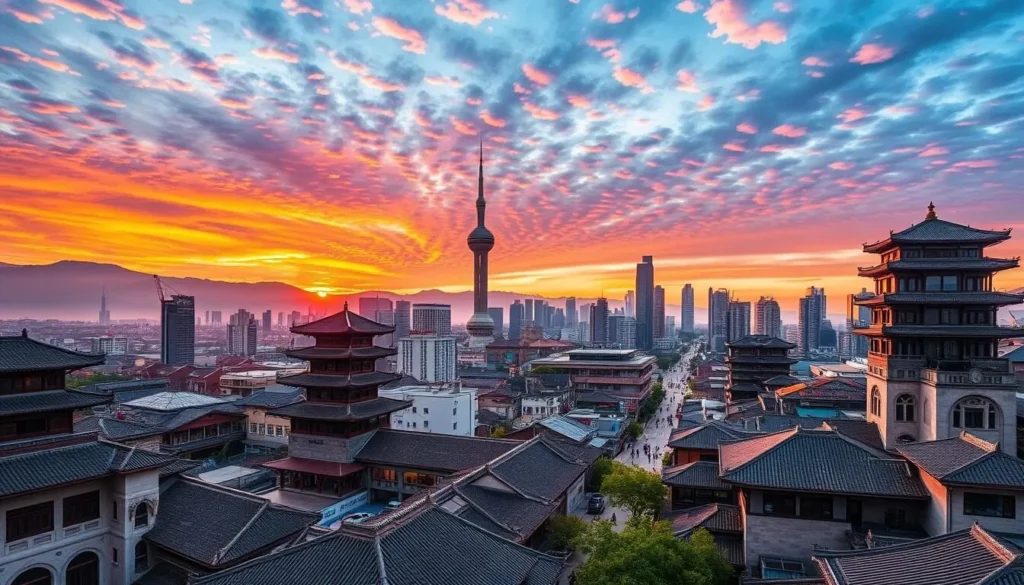
Located in the eastern part of China, Shangrao is a treasure trove of natural beauty and cultural heritage. This city in Jiangxi Province is known for its pristine landscapes, including Wuyuan’s ancient villages and Wangxian Valley’s mountainous scenery.
Shangrao’s history dates back thousands of years, with influences from various Chinese dynasties visible in its architecture and traditions. The culture of Shangrao is a unique blend of traditional and modern elements, shaped by its strategic location and area characteristics.
Despite its incredible beauty and cultural heritage, Shangrao remains relatively unknown to international tourists. This is partly due to its off-the-beaten-path location, making it an ideal destination for travelers seeking an authentic Chinese experience.
One of the standout features of Shangrao is its unique blend of natural wonders and cultural significance. Visitors can explore the ancient villages of Wuyuan, marvel at the stunning scenery of Wangxian Valley, and experience the local customs and traditions that have been preserved through generations.
Shangrao serves as a gateway to experiencing authentic Chinese rural life and traditions that have remained largely unchanged for centuries. By visiting Shangrao, you can gain a deeper understanding of China’s rich history and culture, and appreciate the world heritage that this region has to offer.
When to Visit Shangrao: Best Seasons and Weather Guide
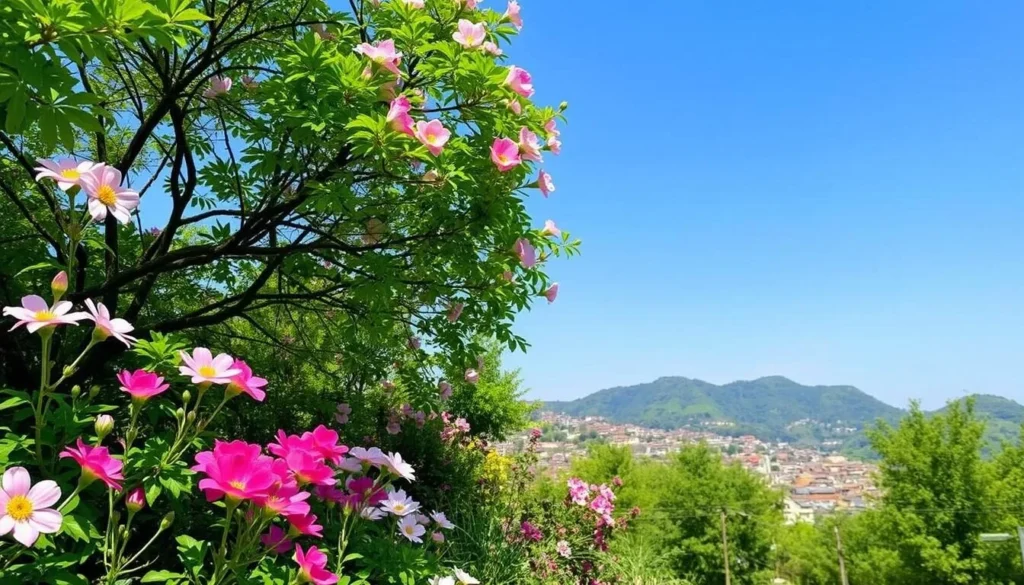
Planning a trip to Shangrao requires understanding the best time to visit this hidden gem in Eastern China. Shangrao’s climate varies across the seasons, offering different experiences throughout the year.
Spring (March to May) is considered the prime time to visit Shangrao, especially Wuyuan, when the rapeseed flowers bloom, creating a stunning yellow landscape. This season is a photographer’s paradise, with mild temperatures and vibrant colors making it ideal for outdoor activities during the day.
In contrast, summer (June to August) brings lush greenery to the region, but it’s also the hottest and most humid time of the year. While it’s a great time for exploring, be prepared for occasional rainfall and higher temperatures, especially at night.
Autumn (September to November) is another excellent season to visit Shangrao. The weather is mild, and the changing foliage creates spectacular mountain vistas, making it perfect for hiking and appreciating the natural beauty of the area.
Winter (December to February) can be quite chilly, but it’s a good time to visit if you prefer fewer crowds. Some attractions may have limited access, but the serene landscapes offer a unique experience.
When planning your trip, consider the specific events, festivals, and natural phenomena that occur throughout the year in Shangrao. This will help you make the most of your time and create unforgettable memories of your trip to this beautiful region.
Wuyuan Ancient Villages: China’s Most Beautiful Countryside

With its well-preserved ancient architecture and picturesque settings, Wuyuan Ancient Villages have earned the title of “China’s most beautiful countryside.” Located about an hour and a half from Huangshan, these villages offer a unique blend of traditional Chinese culture and breathtaking natural beauty.
The Wuyuan Ancient Villages are characterized by their distinctive Hui-style architecture, featuring white walls, black tile roofs, and intricate wood carvings that date back to the Ming and Qing dynasties. As you wander through the villages, you’ll be struck by the perfect harmony between the built environment and the natural surroundings.
Some of the most famous villages in the region include Likeng, Xiaoqi, and Sixi Yancun, each with its own unique charm and historical significance. Likeng, for instance, is known for its well-preserved ancient buildings and traditional way of life, making it a worth visit destination for anyone interested in cultural heritage.
As you explore these villages, you’ll have the opportunity to experience authentic rural Chinese culture. Despite modernization elsewhere in China, these villages have maintained their traditional way of life, offering a glimpse into a bygone era. You’ll see locals going about their daily routines, surrounded by the beauty of nature.
The villages are nestled among hills, streams, and flowering fields that change with the years old traditions and the seasons. This picturesque setting makes Wuyuan Ancient Villages an ideal destination for nature lovers and those seeking a tranquil retreat from the hustle and bustle of city life.
To make the most of your visit, it’s recommended to plan your trip for 1-2 days. This will give you ample time to explore the various villages, take in the stunning scenery, and soak up the local culture. You can choose to stay in nearby accommodations and enjoy the peaceful surroundings.
Practical tips for exploring these villages include planning your route in advance, using local transportation options, and prioritizing the most significant villages if your time is limited. With its rich history, stunning natural beauty, and well-preserved architecture, Wuyuan Ancient Villages are truly a village worth visiting.
Exploring the Stunning Wangxian Valley

For those seeking an adventure amidst nature’s splendor, Wangxian Valley offers a captivating blend of landscapes and heritage. Located in Shangrao, this breathtaking destination is famous for its mountainous cliffside hanging houses, waterfalls, picturesque valleys, ancient villages, temples, and verdant fields.
As you explore Wangxian Valley, you’ll be struck by the dramatic scenery that unfolds before your eyes. The valley’s unique cultural elements, including its cliffside hanging houses, showcase the ingenuity of traditional Chinese architecture. These houses, seemingly defying gravity as they cling to steep mountain faces, are a marvel to behold.
Hiking Trails and Spectacular Views
The valley’s network of hiking trails winds through diverse terrains, offering spectacular views of waterfalls, gorges, and lush vegetation. As you hike, you’ll be immersed in the natural beauty of the valley, with opportunities to spot local wildlife and appreciate the serene atmosphere.
Wangxian Valley is also home to ancient villages that provide glimpses into traditional rural life and architectural styles unique to this region. Visiting these villages, you’ll gain insight into the local culture and history, enriching your travel experience.
Historic Temples and Cultural Significance
Scattered throughout the valley are historic temples that serve as important spiritual and cultural landmarks for local communities. These temples not only offer a glimpse into the region’s rich cultural heritage but also provide a serene atmosphere for contemplation and reflection.
To fully appreciate the natural beauty and cultural significance of Wangxian Valley, it’s recommended to spend at least two days exploring this stunning destination. With its diverse landscapes, rich heritage, and unique cultural elements, Wangxian Valley is an unforgettable experience that will leave you in awe of nature’s splendor.
Getting to Wangxian Valley takes about 2½ hours by road from Wuyuan, making it an ideal day-trip or a longer stay, depending on your travel plans. Whether you’re interested in hiking, cultural exploration, or simply taking in the breathtaking scenery, Wangxian Valley has something to offer every kind of traveler.
Mount Sanqing National Park: A UNESCO World Heritage Site

As a UNESCO World Heritage Site, Mount Sanqing National Park offers an unforgettable experience with its unique landscapes and historical significance. You will be captivated by the park’s extraordinary granite peaks, deep valleys, and diverse ecosystems.
Mount Sanqing, which translates to “Three Pure Ones,” holds significant Taoist importance. The three main peaks represent Taoist deities, creating a spiritual atmosphere that resonates with visitors. You can explore the park’s unique geological features, including granite formations that resemble animals and mythical creatures when viewed from different angles.
Exploring the Park’s Natural Beauty
The park is crisscrossed with well-maintained hiking trails that cater to various fitness levels, from easy walks to more challenging treks. You can enjoy the scenic beauty while hiking through lush forests and appreciating the rich biodiversity.
A cable car system is available, providing convenient access to the mountain’s upper reaches. This not only offers stunning views but also helps preserve the natural environment by reducing the impact of foot traffic.
Practical Tips for Your Visit
To make the most of your visit to Mount Sanqing National Park, plan your trip during the best seasons. The park is known for its peaks that are particularly breathtaking during sunrise and sunset.
Consider the following tips:
– Choose the right trail according to your fitness level.
– Use the cable car to access higher elevations comfortably.
– Be prepared for variable weather conditions.
– Respect the park’s rules to preserve its natural beauty.
By following these guidelines, you can have a memorable and enjoyable experience at Mount Sanqing National Park, a true gem of national park status.
Jingdezhen: The Porcelain Capital of China
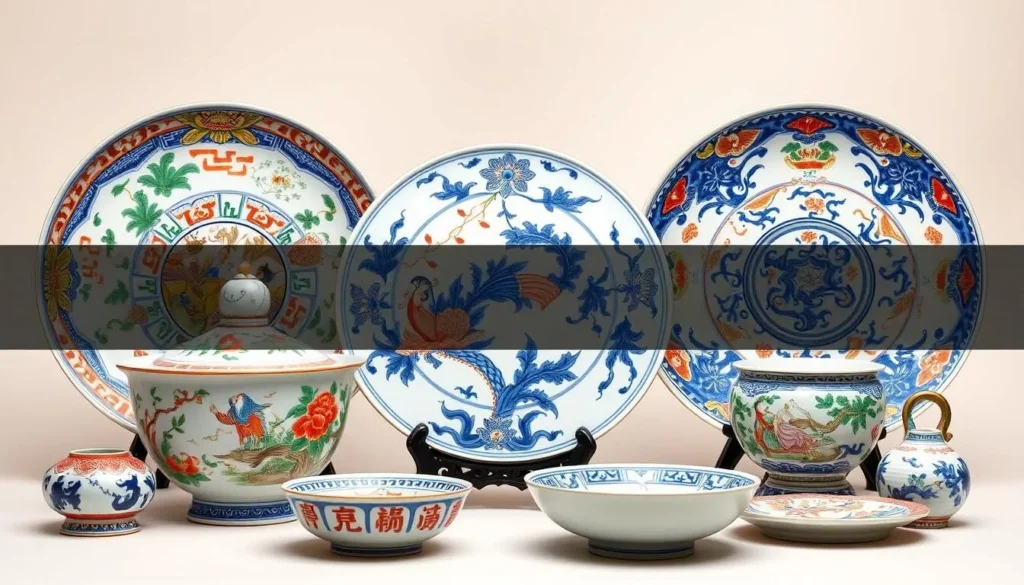
With over 1,700 years of history, Jingdezhen is renowned as the ‘Porcelain Capital’ of China, making it an ideal day trip from Shangrao. You can discover this world-renowned city, located near Shangrao, and easily accessible as a fascinating day trip destination.
Jingdezhen’s remarkable history of porcelain production has shaped Chinese art and culture and influenced ceramic traditions worldwide. You can learn about the cultural heritage of this city by exploring the traditional workshops where skilled artisans continue to create exquisite porcelain pieces using techniques passed down through generations.
A visit to the Jingdezhen Ceramic History Museum is a must to understand the evolution of Chinese porcelain from its earliest forms to contemporary masterpieces. You will have the opportunity to experience hands-on pottery workshops where you can learn basic techniques and create your own ceramic souvenir.
Jingdezhen’s porcelain was highly prized throughout years of history, becoming a valuable export along the ancient Silk Road and to royal courts worldwide. You can appreciate how this living tradition continues to thrive today, with a new generation of ceramic artists blending traditional techniques with contemporary designs.
A trip to Jingdezhen is definitely worth visiting, as it offers a unique glimpse into China’s rich ceramic history. As you explore this city, you will discover the rich cultural heritage that has been preserved and passed down through the centuries.
Shangrao, China: Best Things to Do – Top Picks for Nature Lovers
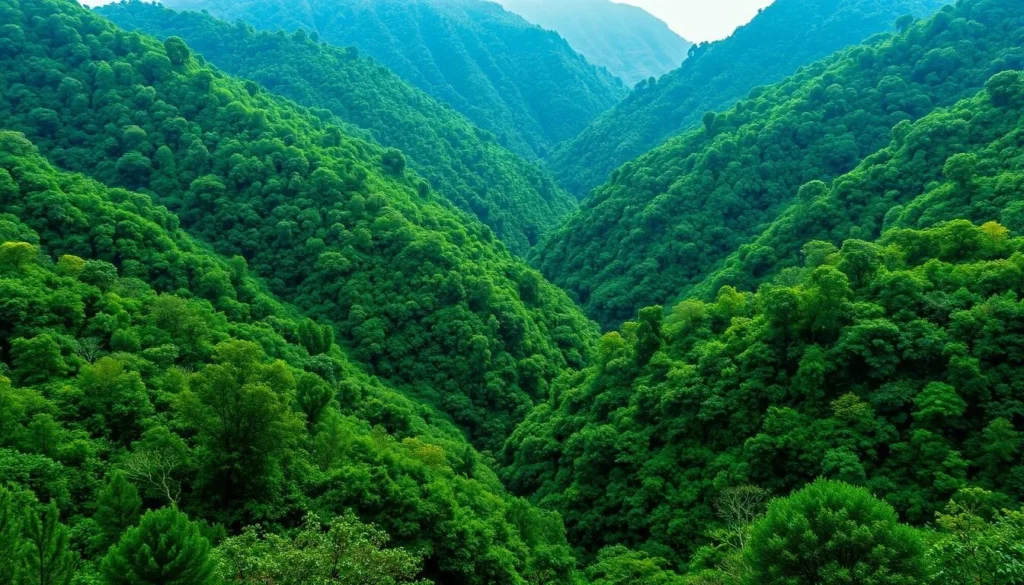
For those who crave authentic wilderness experiences, Shangrao offers a wealth of natural attractions that are off the beaten path. As a nature lover, you’ll discover that Shangrao is a paradise for outdoor enthusiasts, with its diverse landscapes and ecosystems waiting to be explored.
One of the best ways to experience Shangrao’s natural beauty is by visiting its forest parks and nature reserves. These areas are not only breathtakingly beautiful but also provide a peaceful escape from the more crowded tourist sites. You can hike through lush forests, observe rare plant and animal species, and enjoy the serene landscapes that Shangrao has to offer.
Shangrao’s diverse landscapes are a testament to its natural beauty. From mist-shrouded mountains and bamboo forests to crystal-clear streams and serene lakes, there’s no shortage of breathtaking scenery to explore. The region’s national forest park is a must-visit, offering hiking trails that wind through diverse ecosystems and providing opportunities for wildlife observation and nature photography.
Exploring Shangrao’s Natural Attractions
To make the most of your visit to Shangrao, consider the following tips:
- Bring appropriate gear for hiking and outdoor activities, including comfortable shoes, water, and sun protection.
- Visit during the spring or autumn for the best weather conditions and to see the region’s wildflowers or autumn foliage.
- Practice responsible eco-tourism by respecting local wildlife and ecosystems, and minimizing your environmental impact.
By following these tips and exploring Shangrao’s natural attractions, you’ll be able to experience the best that this beautiful region has to offer. Whether you’re hiking through the forest parks, observing wildlife in the nature reserves, or simply taking in the breathtaking scenery, Shangrao is sure to leave a lasting impression on you.
Rapeseed Flower Fields of Wuyuan: A Photographer’s Paradise
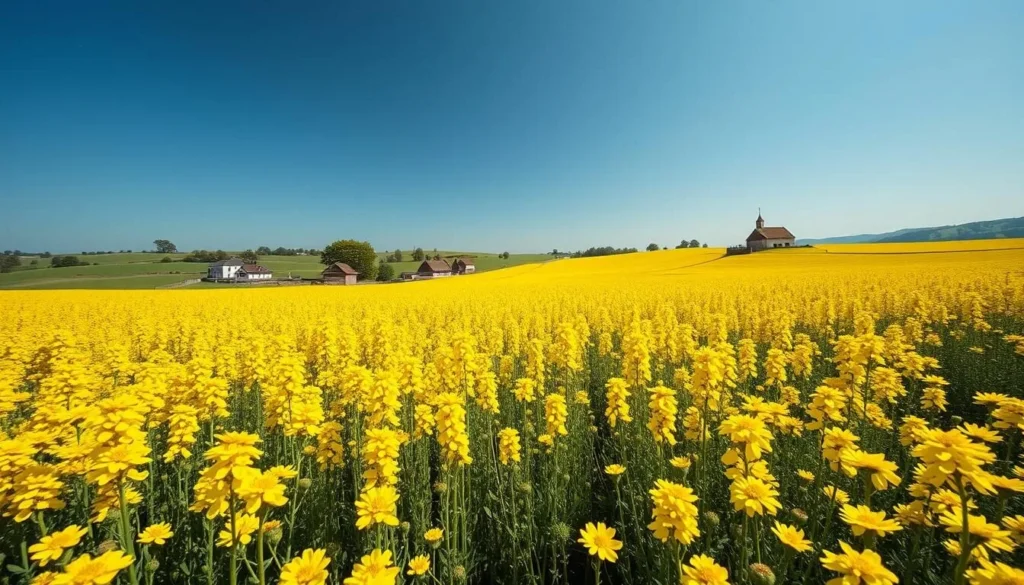
As spring arrives, Wuyuan’s landscape is painted with vibrant yellow hues, creating a photographer’s dream. The rapeseed flower fields, which bloom from mid-March to early April, transform the countryside into a breathtakingly beautiful scene.
The optimal time to visit Wuyuan is during this spring season, typically from mid-March to early April, when the golden blooms are at their peak. The views are nothing short of spectacular, with the yellow flower fields creating stunning contrasts against the backdrop of traditional white-walled villages, green hills, and blue streams.
For nature enthusiasts and photographers, Wuyuan’s rapeseed flower fields have become legendary, creating some of China’s most iconic rural landscapes. The beauty of these fields lies not only in their visual appeal but also in their agricultural significance. Rapeseed cultivation serves both practical purposes for local farmers and creates a seasonal tourist attraction.
To capture the perfect shots of these golden landscapes, consider the following photography tips: visit during the early morning or late afternoon for the best light, use a wide-angle lens to capture the vast fields, and experiment with different compositions that include the surrounding landscape.
Navigating the spring high season in Wuyuan requires some planning. To avoid crowds, consider visiting less-visited viewpoints or exploring the area early in the morning. This approach not only provides a more serene experience but also offers spectacular scenery without the distraction of large crowds.
The rapeseed flower fields have become central to Wuyuan’s tourism industry. Efforts are being made to balance visitor numbers with environmental protection, ensuring that this natural spectacle can be enjoyed for years to come.
Traditional Tea Culture and Plantations in Shangrao
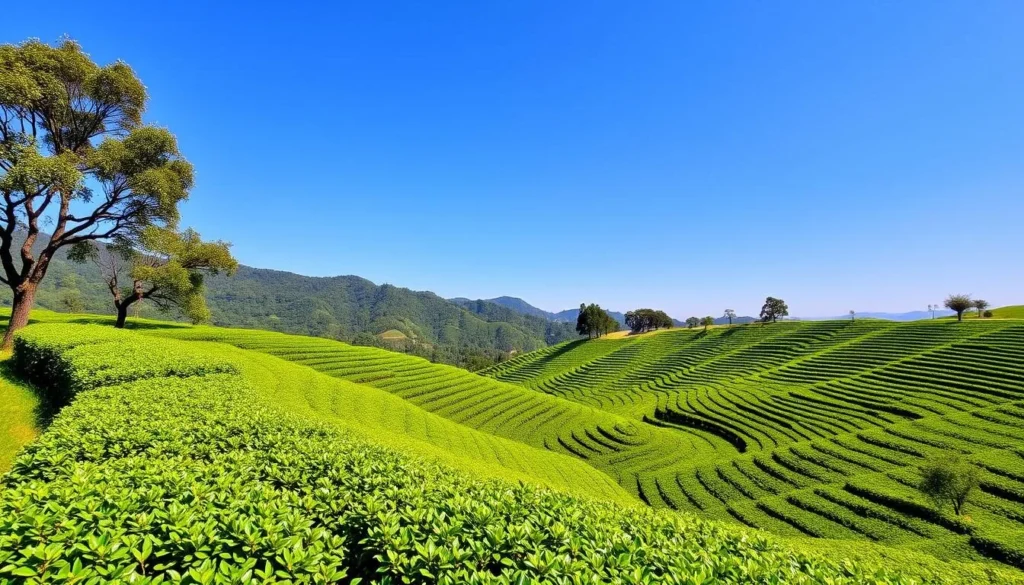
Explore the picturesque tea plantations of Shangrao, where tradition meets breathtaking natural beauty. The Shangrao region is renowned for its high-quality tea production, particularly its green tea grown on mountain slopes. Visitors can tour tea plantations, learn about traditional processing methods, and participate in tea ceremonies.
The unique climate and mountainous terrain of Shangrao create ideal conditions for growing some of China’s finest teas. As you explore the tea plantations, you’ll notice the distinctive terraced landscapes that cascade down the mountain slopes. These productive agricultural sites are not only scenic attractions but also a testament to the region’s rich tea heritage.
By visiting Shangrao’s tea plantations, you can learn about the traditional methods of tea cultivation, harvesting, and processing that have been passed down through generations of local tea farmers. You can experience authentic Chinese tea culture through guided tastings and ceremonies, revealing the subtle art of tea appreciation and its importance in Chinese society.
Shangrao is known for producing various types of tea, including prized green teas known for their delicate flavors and health benefits. You can visit working tea factories to observe the meticulous processing steps that transform fresh tea leaves into the finished product. This insight will help you appreciate the care and craftsmanship that goes into producing Shangrao’s famous teas.
Tea production remains an important part of the local economy in Shangrao, adapting to modern sustainable farming practices and international market demands. As you explore the region’s tea culture, you’ll gain a deeper understanding of the significance of tea in the local community and its contribution to the regional identity.
Whether you’re a tea enthusiast or simply looking to experience the natural beauty of Shangrao, a visit to the tea plantations is a must. With its unique blend of tradition, culture, and natural scenery, Shangrao offers an unforgettable tea experience that will leave you with lasting memories of your trip.
Historical Sites and Ancient Architecture in Shangrao
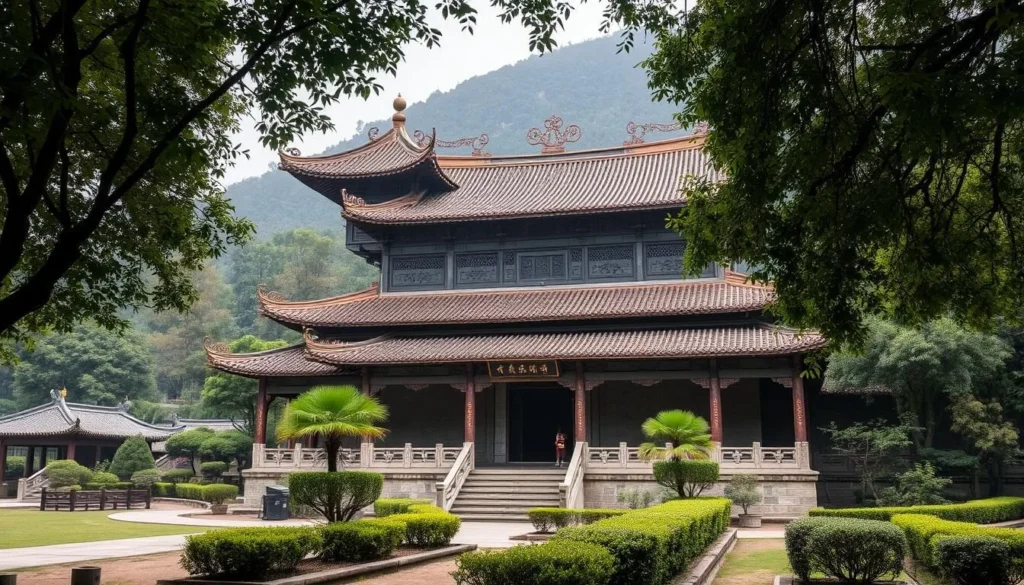
With a history spanning multiple dynasties, Shangrao boasts an array of historical sites that are a testament to its cultural significance. As you visit Shangrao, you’ll have the opportunity to explore the rich historical heritage of the region through its diverse collection of ancient structures.
The region is home to numerous ancient temples, some of which date back hundreds of years, showcasing exquisite wooden craftsmanship, stone carvings, and traditional Chinese religious art. These temples are not only significant religious sites but also serve as a window into the region’s history and culture.
In addition to temples, Shangrao is also known for its ancestral halls, which served as important centers for clan gatherings, ancestor worship, and community governance throughout Chinese history. These halls provide valuable insights into the social and cultural practices of the region’s past.
The engineering marvel of ancient bridges in Shangrao is another highlight, featuring stone arch bridges and covered “wind and rain” bridges that have withstood centuries of use. These bridges are a testament to the ingenuity and craftsmanship of the region’s ancestors.
Shangrao’s ancient town areas also feature historical city walls, gates, and other defensive structures that protected communities in earlier times. These structures not only highlight the region’s strategic importance but also reflect the political and social developments of different periods in Chinese history.
As you visit these historical sites, you’ll gain a deeper understanding of traditional Chinese architectural principles, including feng shui concepts, symbolic decorative elements, and construction techniques that allowed these buildings to survive for centuries. Shangrao’s historical sites are truly a heritage site that showcases the city’s rich cultural tapestry.
Located in the heart of the city, these historical landmarks are easily accessible, making Shangrao an ideal destination for those interested in exploring China’s rich cultural heritage. Many of these sites are hundreds of years old, offering a unique glimpse into the region’s past.
Local Cuisine: Must-Try Dishes in Shangrao
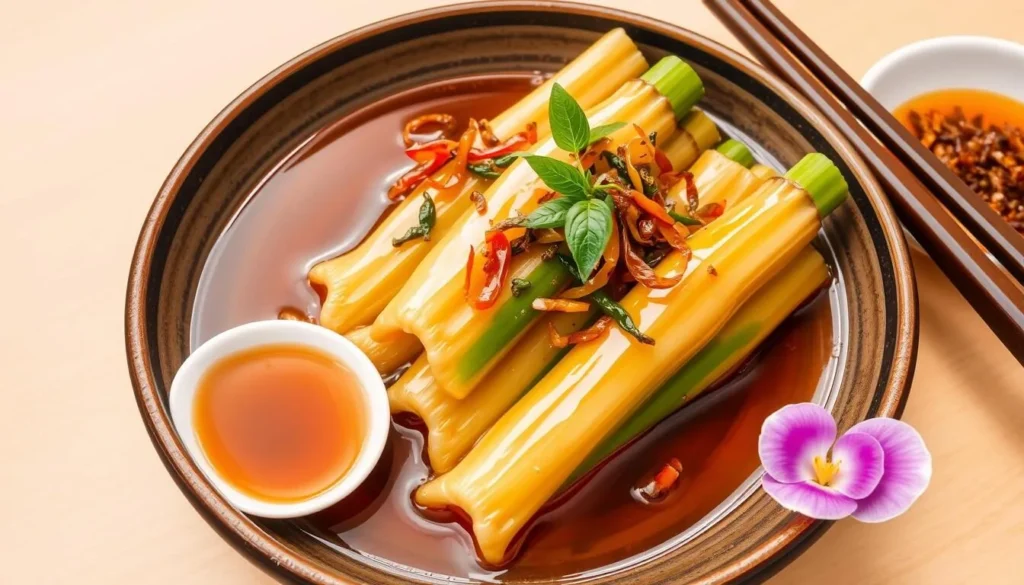
When visiting Shangrao, you’ll discover a world of flavors that blend traditional Jiangxi cuisine with local ingredients. The city’s cuisine is characterized by its use of fresh local produce, including bamboo shoots, mountain vegetables, and river fish, often infused with the subtle flavors of tea.
Distinctive Culinary Traditions: Shangrao’s culinary traditions are a unique blend of Jiangxi provincial flavors and local cooking techniques. The region’s agricultural abundance is reflected in its seasonal specialties, ranging from spring bamboo shoots and summer fruits to autumn mushrooms and winter preserved foods.
The Importance of Tea: Tea plays a significant role in Shangrao’s cuisine, not just as a beverage but as an ingredient that imparts subtle flavors and aromas to various dishes. Tea-infused dishes are a hallmark of the region’s culinary culture.
Geographical Influence: Shangrao’s geography has a profound influence on its food culture, with mountain vegetables, freshwater fish, and rice being staple ingredients in many traditional recipes. The region’s fertile land and favorable climate make it an agricultural haven.
Visiting local markets is a great way to experience the vibrant food scene firsthand. Farmers bring fresh produce from surrounding villages, and food vendors prepare regional specialties that showcase the area’s culinary diversity.
Traditional Dining Customs: Understanding the traditional dining customs of Shangrao can enhance your culinary experience. Meal structures, serving etiquette, and the social importance of shared meals are all integral to the region’s culture.
Some must-try dishes during your visit include everyday comfort foods and special festival delicacies that might not be found elsewhere in China. Be sure to experience the local cuisine at its best by trying these recommended dishes.
At the heart of Shangrao’s cuisine is its rich culture and history, making every meal a reflection of the region’s heritage. Take your time to savor the flavors and aromas of this beautiful city.
Day Trips from Shangrao: Nearby Attractions
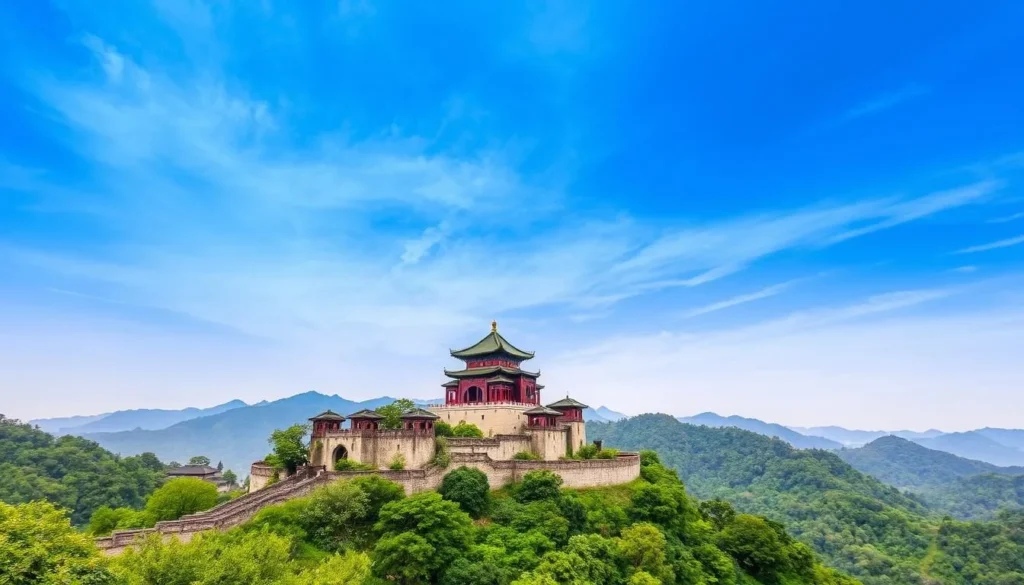
Day trips from Shangrao offer a wealth of opportunities to experience the natural beauty and cultural richness of eastern China. With its strategic location, you can visit numerous exciting destinations within a few hours.
One of the most famous attractions within a day’s trip from Shangrao is Huangshan (Yellow Mountain), known for its uniquely shaped granite peaks and breathtaking sea of clouds. Located approximately 2-3 hours away, Huangshan is a must-visit destination for any traveler. The mountain’s scenic beauty, combined with its rich cultural heritage, makes it an unforgettable experience.

Another great option is Lushan National Park, a mountain retreat with historical significance featuring colonial-era villas, impressive waterfalls, and panoramic views of Poyang Lake. Lushan is not only a natural wonder but also a place of great cultural and historical importance.
Beyond these famous mountains, you can also visit additional ancient villages beyond Wuyuan, each offering different architectural styles and cultural experiences. These villages are within easy reach of Shangrao city, making them perfect for a day trip.
To make the most of your day trips, you have several transportation options, including private car hire, public buses, and organized tours. These options allow you to maximize your time at each destination and enjoy a hassle-free journey.
When planning your day trips, consider which nearby attractions pair well together for efficient travel. Some destinations might deserve a longer stay, making an overnight extension worthwhile. Shangrao’s central location in eastern China makes it an excellent base for exploring a diverse range of landscapes and cultural sites across multiple provinces.
By taking day trips from Shangrao, you can experience the best of eastern China, from stunning natural landscapes to rich cultural heritage sites. Whether you’re interested in history, nature, or culture, Shangrao is your gateway to a memorable journey.
Where to Stay in Shangrao: Accommodation Guide
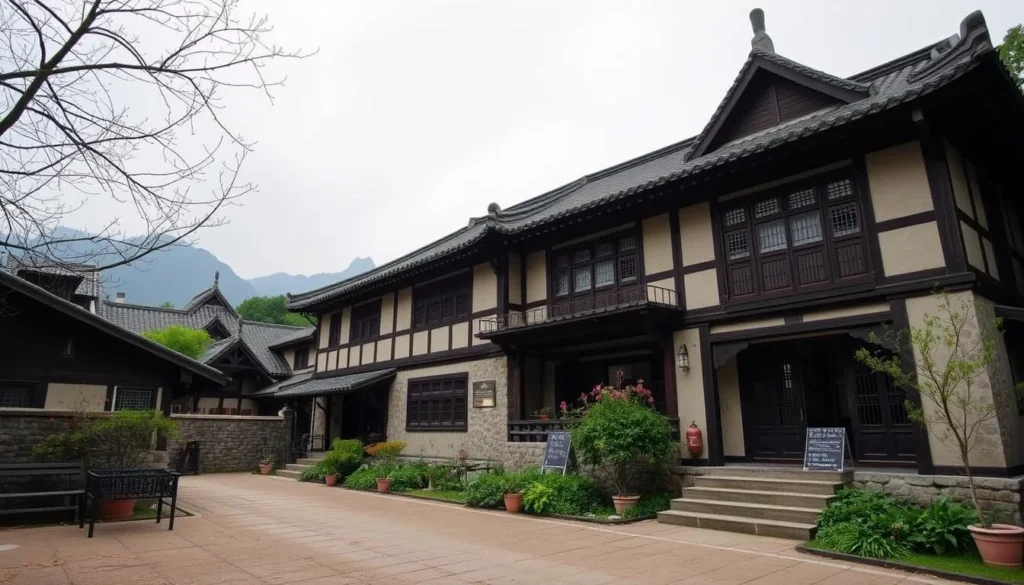
Whether you’re looking for convenience or an authentic cultural experience, Shangrao’s accommodation options have got you covered. You can choose from a wide range of accommodations that cater to different preferences, budgets, and desired experiences.
Staying in Shangrao city center offers convenient access to transportation hubs, restaurants, and urban amenities. Modern hotels in the city provide comfortable stays with easy access to key attractions. On the other hand, staying in ancient villages like those in Wuyuan offers a unique opportunity to immerse yourself in traditional culture and historic architecture.
The growing trend of boutique guesthouses and homestays throughout the region combines authentic local character with comfortable modern amenities. You can experience the local way of life while enjoying a relaxing stay.
When choosing your accommodation, consider the location based on your itinerary. Some areas serve as good bases for exploring different attractions. For example, staying in Wuyuan allows you to explore the ancient villages and surrounding countryside.
Seasonal considerations are also important when booking your accommodation. During peak periods, advance reservations are essential, while quieter times offer more options. Be sure to plan ahead to ensure a smooth trip.
Accommodation prices in Shangrao vary, with options ranging from budget-friendly guesthouses to luxury hotels. You can expect different facilities and services across various accommodation categories, so it’s worth researching to find the best fit for your needs.
By choosing the right accommodation for your needs, you can enhance your overall experience in Shangrao and make the most of your time in this beautiful region.
Transportation in Shangrao: Getting Around
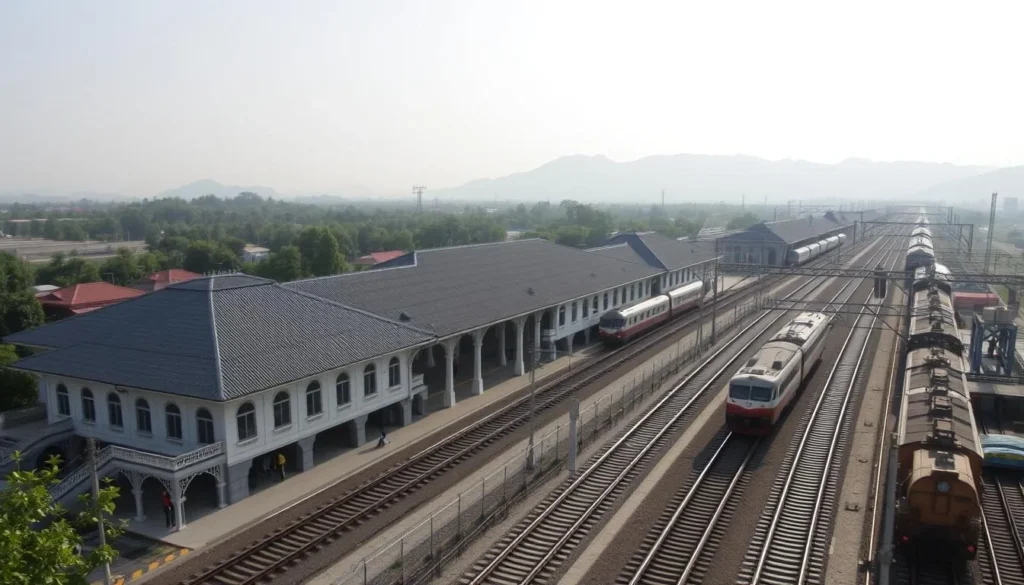
Shangrao is well-connected to major Chinese cities by high-speed rail, making it easily accessible. The city’s transportation network is designed to facilitate travel within the region, ensuring that you can explore its diverse attractions with ease.
Within Shangrao city, you have several local transportation options, including public buses, taxis, and ride-hailing services. These connect urban areas with suburban attractions, making it convenient to get around.
For more remote attractions like Wuyuan villages and Wangxian Valley, consider private car hire or organized tours. These options provide a hassle-free way to reach these destinations, which are known for their natural beauty and cultural significance.
During peak travel seasons, shuttle buses operate between popular tourist sites, further enhancing the transportation infrastructure in rural areas. Understanding the typical travel times between key attractions can help you plan an efficient itinerary, maximizing your sightseeing time.
When using public transportation, you may encounter language barriers. To overcome this, learn useful phrases, use translation apps, and communicate clearly with drivers. This will ensure a smoother travel experience.
By understanding Shangrao’s transportation options and planning your trip accordingly, you can make the most of your visit and enjoy all that the region has to offer.
Practical Travel Tips for Visiting Shangrao
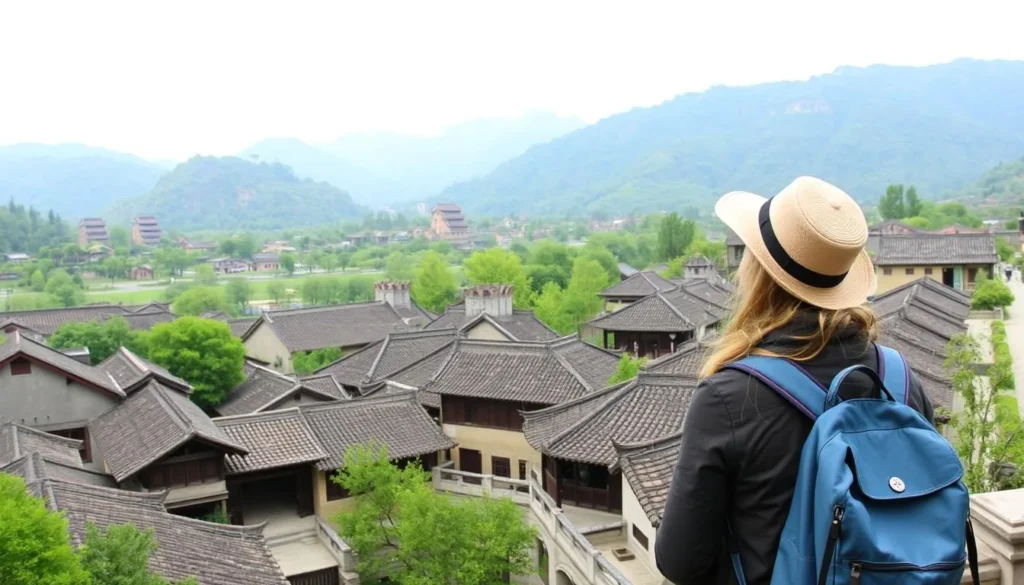
Traveling to Shangrao offers a unique opportunity to explore a less internationally visited region of China, but it requires some preparation. To make the most of your trip to Shangrao, it’s crucial to be prepared for the varying conditions you may encounter.
One of the key factors in enjoying your travel experience is understanding the best time to visit specific attractions. During peak tourist seasons, consider visiting popular sites early in the morning or late in the afternoon to avoid crowds.
Language can be a barrier in Shangrao, as English is not widely spoken outside major tourist areas. To enhance your experience, consider downloading translation apps or learning basic Mandarin phrases to help you communicate with locals.
Packing Tips for Shangrao
Packing appropriately for Shangrao’s climate and activities is essential. Bring clothing suitable for the season, comfortable walking shoes for exploring villages, and camera equipment to capture the scenic landscapes.
Staying connected during your day trips is also important. Research VPN recommendations and local SIM card options to ensure you have internet and mobile connectivity, even in more remote areas.
Cultural Etiquette in Shangrao
Understanding local customs and cultural etiquette will help you interact respectfully with residents, especially in traditional village communities. Be mindful of local traditions and practices during your visit.
Finally, being prepared for money matters will help you navigate your trip more smoothly. Know where to exchange currency, understand credit card acceptance, and be aware of typical costs for activities, meals, and transportation.
By following these practical travel tips, you’ll be well-prepared to make the most of your experience in Shangrao and enjoy a memorable travel adventure.
Conclusion: Why Shangrao Should Be on Your China Itinerary
Experience the authentic charm of rural China in Shangrao, a city that perfectly balances nature and cultural heritage. As you travel through this hidden gem, you’ll discover stunning landscapes, rich cultural traditions, and a way of life that remains untouched by modernization.
Shangrao offers a unique experience that complements visits to major cities like Shanghai and Beijing. With its UNESCO World Heritage sites, picturesque ancient villages, and breathtaking natural beauty, Shangrao is a must-visit destination for any trip to China. By incorporating Shangrao into your China travel plans, you’ll gain a deeper understanding of the country’s diverse cultural heritage and nature.
So why not make Shangrao part of your China trip? With its authentic experience and stunning beauty, Shangrao is sure to leave a lasting impression on your travels. Start planning your visit today and discover the charm of this incredible city for yourself.
The above is subject to change.
Check back often to TRAVEL.COM for the latest travel tips and deals.
